The right fit for Goalie Chest ProtectorUpdated a year ago
It is important to size a chest protector properly to ensure that the goaltender's range of motion (ROM) is not restricted while still providing complete coverage from impact. The first step is to use the sizing charts provided on the product page of the chest protector on our website. Usually, this is done by matching the arm span or height to a particular size.
You can refer to this video for a detailed breakdown on finding the perfect fit for a Goalie Chest Protector:
After approximating the size, the goaltender should ensure that the following criteria are met for an ideal fit:
- The arms should end just before the wrist bone, so that the wrist straps on blockers/trappers have little interference. For growing goalies, just over the wrist bone is a good rule of thumb, which provides ample room for gloves and usually lasts the owner 1.5 - 2 years. Some models come with adjustable arm lengths, which is ideal for goaltenders who have longer/shorter arm proportions or are growing.
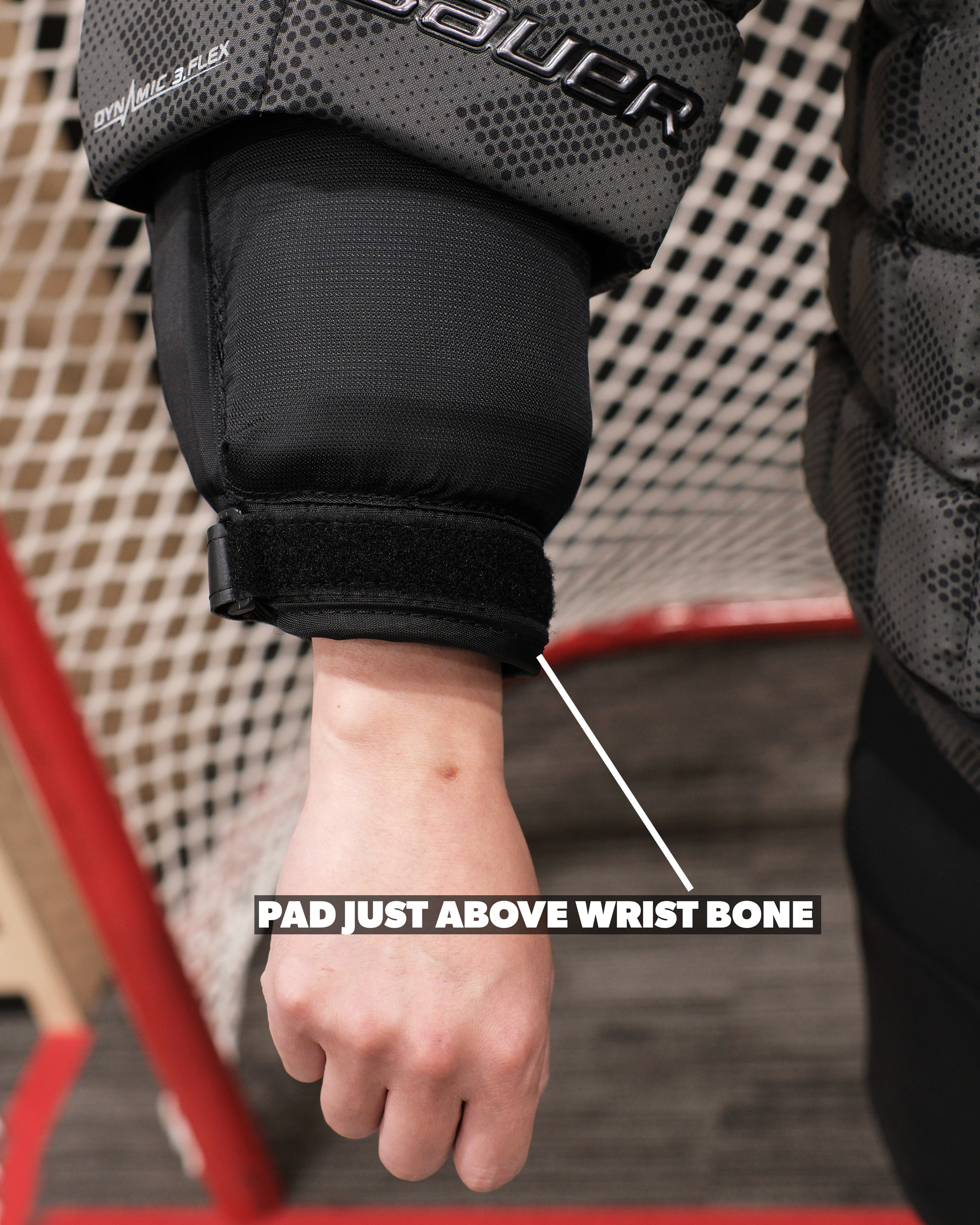
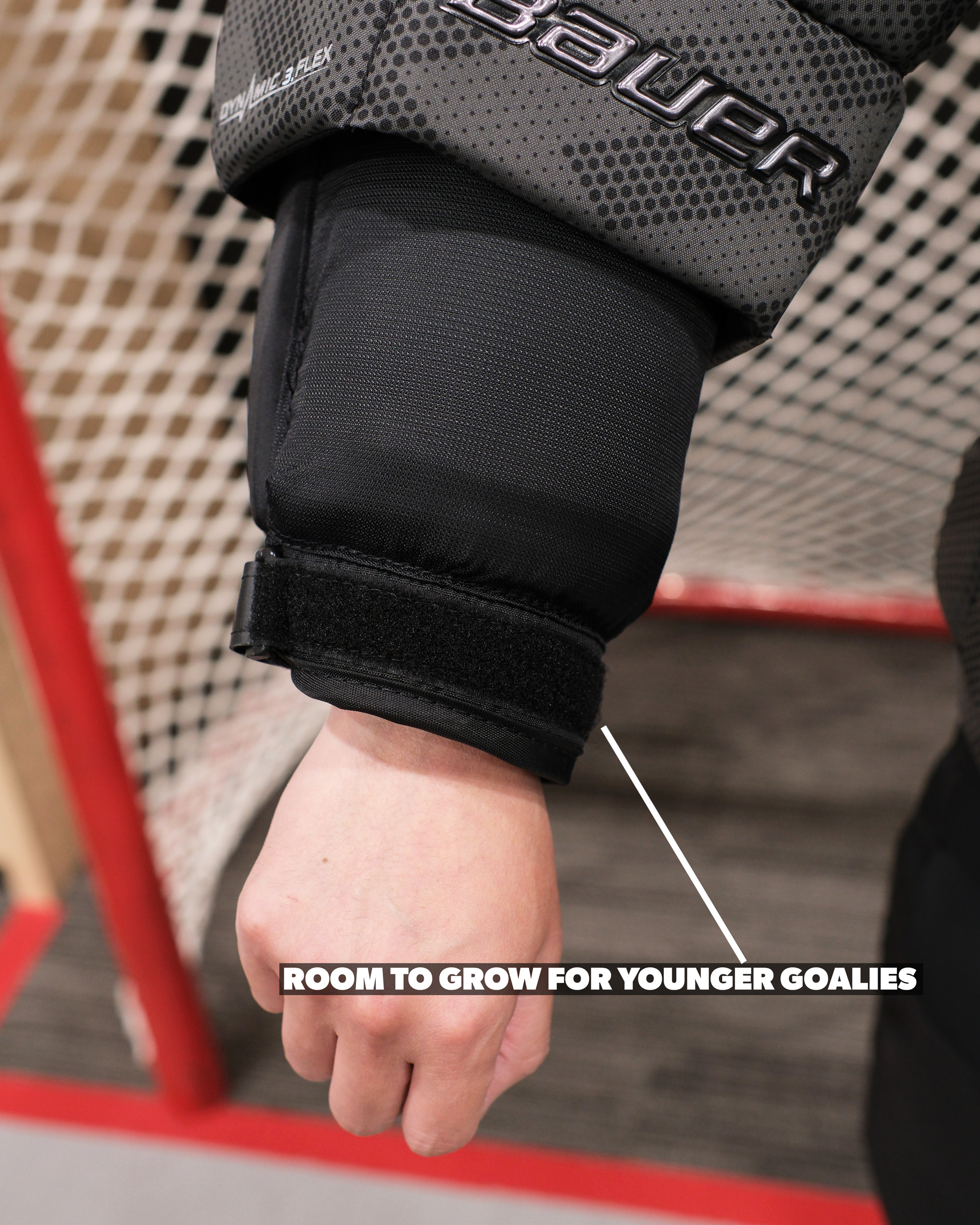
2. The elbows should fit securely in the pocket of the plastic protector and not shift too far away from them.
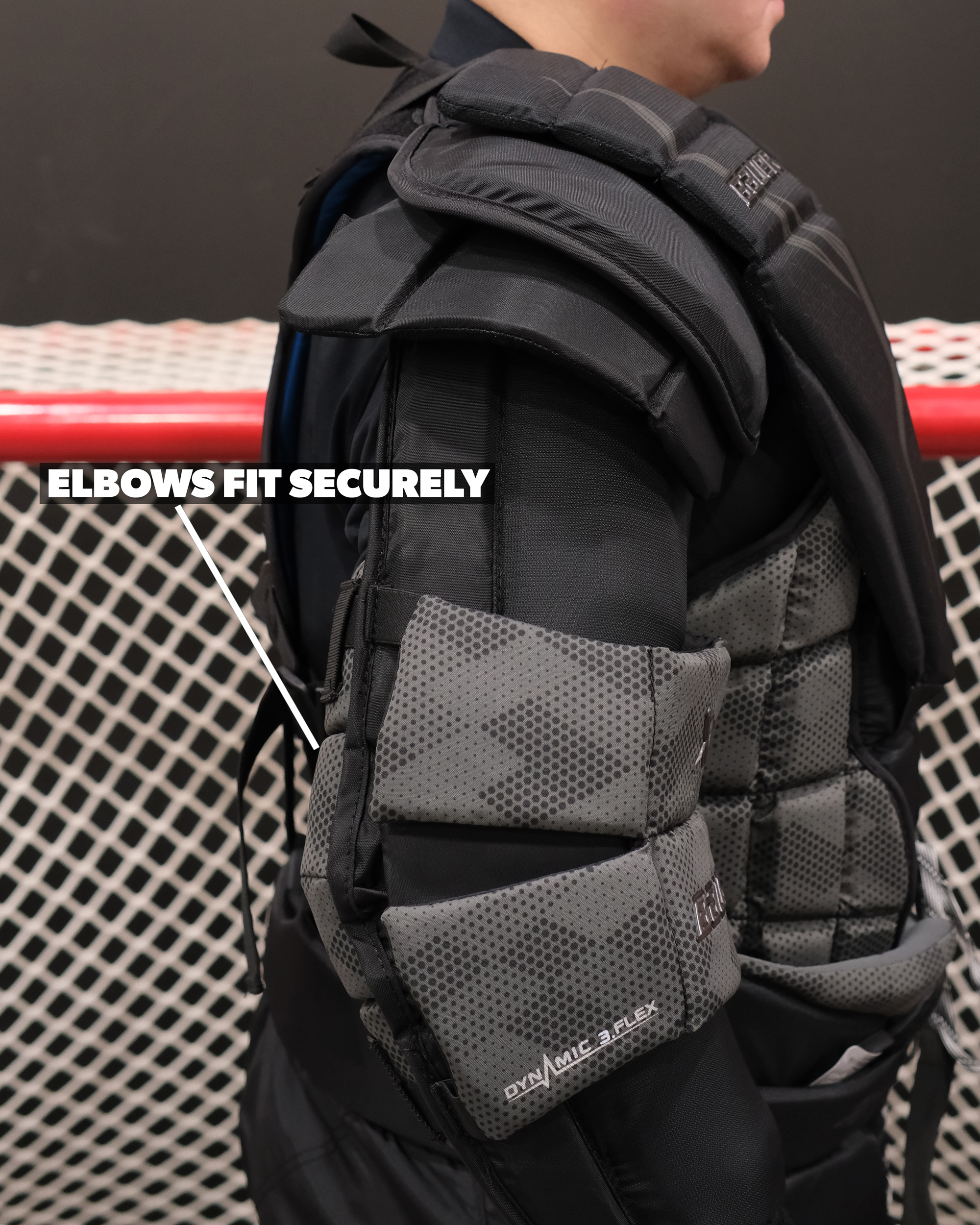
3. The belly portion should extend to the waistline if worn outside the pants and allow the goaltender to crouch comfortably. If the goalie is growing or likes to tuck the chest protector into the pants, this length can usually be extended by ~2” – 4”.


4. The shoulder caps should sit square on the goalie and wrapped around the body rather than protruding upwards and interfering with the goalie’s ability to turn their head. Additionally, there should be a small gap between the collar and neck of the wearer to allow the head to look downwards while also ensuring complete coverage while the goalie’s head is lowered in the ready position.
.jpg)
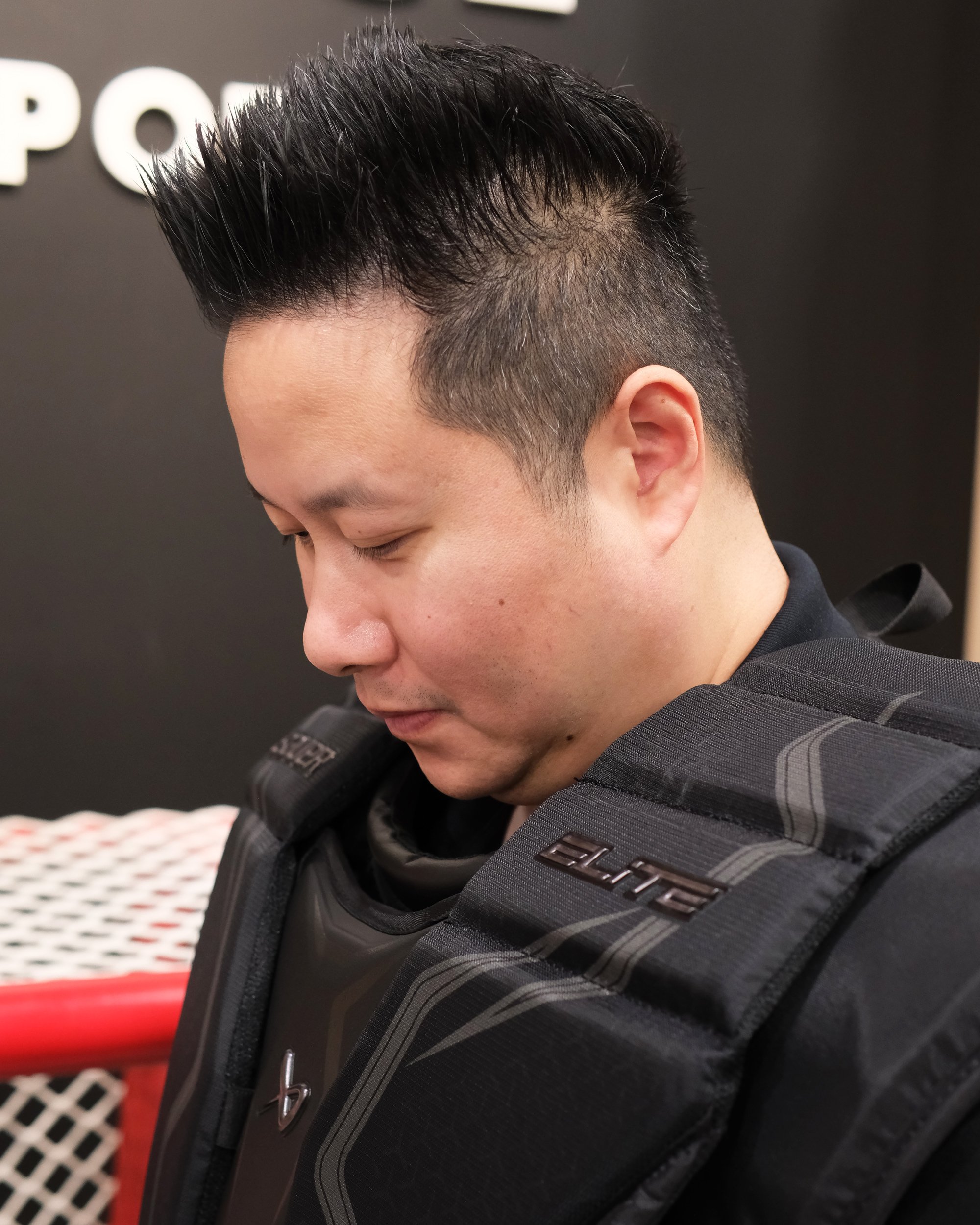
Once the chest/arm meets these criteria, it is always a good idea to see how well it integrates with your goal pants, mask and gloves. The goaltender should be able to get in and out of the crouch without excess mask/pant interference. Gloves should not be pushed from the arm, and a full ROM should be achieved for all save selections in addition to puck handling.
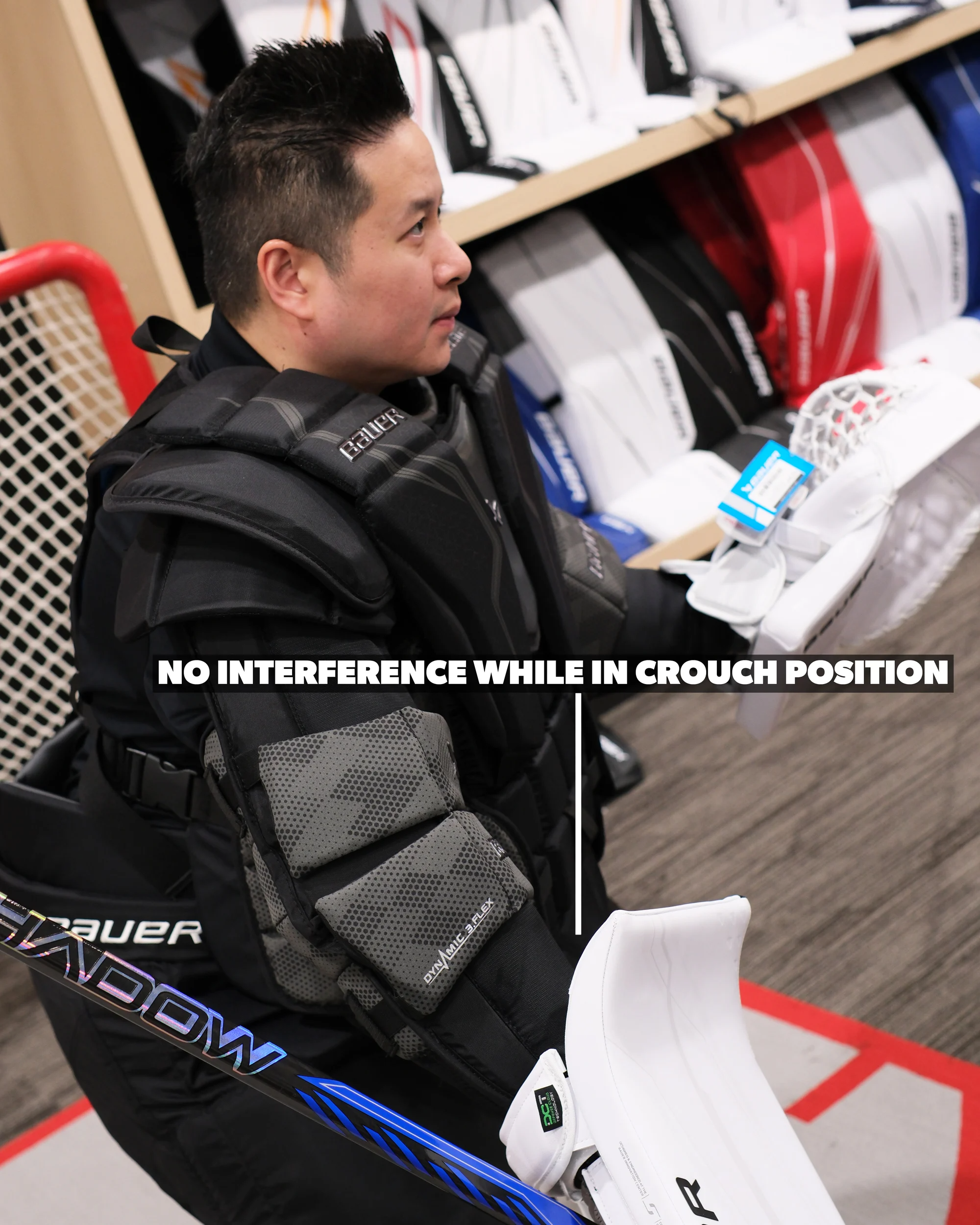
New units are usually stiff, but with time movement and overall comfort will improve. To speed up the break-in process, steam is recommended. Direct washing or excess water should be avoided to prevent premature foam breakdown.